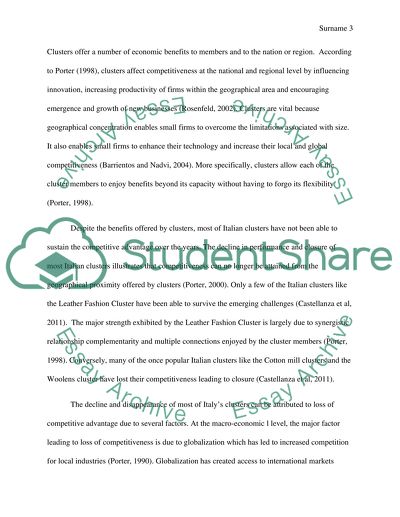Cite this document
(“Italian Clusters: Porters Theory Article Example | Topics and Well Written Essays - 1250 words”, n.d.)
Italian Clusters: Porters Theory Article Example | Topics and Well Written Essays - 1250 words. Retrieved from https://studentshare.org/sociology/1449922-clusters-theory-economic-sociology
Italian Clusters: Porters Theory Article Example | Topics and Well Written Essays - 1250 words. Retrieved from https://studentshare.org/sociology/1449922-clusters-theory-economic-sociology
(Italian Clusters: Porters Theory Article Example | Topics and Well Written Essays - 1250 Words)
Italian Clusters: Porters Theory Article Example | Topics and Well Written Essays - 1250 Words. https://studentshare.org/sociology/1449922-clusters-theory-economic-sociology.
Italian Clusters: Porters Theory Article Example | Topics and Well Written Essays - 1250 Words. https://studentshare.org/sociology/1449922-clusters-theory-economic-sociology.
“Italian Clusters: Porters Theory Article Example | Topics and Well Written Essays - 1250 Words”, n.d. https://studentshare.org/sociology/1449922-clusters-theory-economic-sociology.


